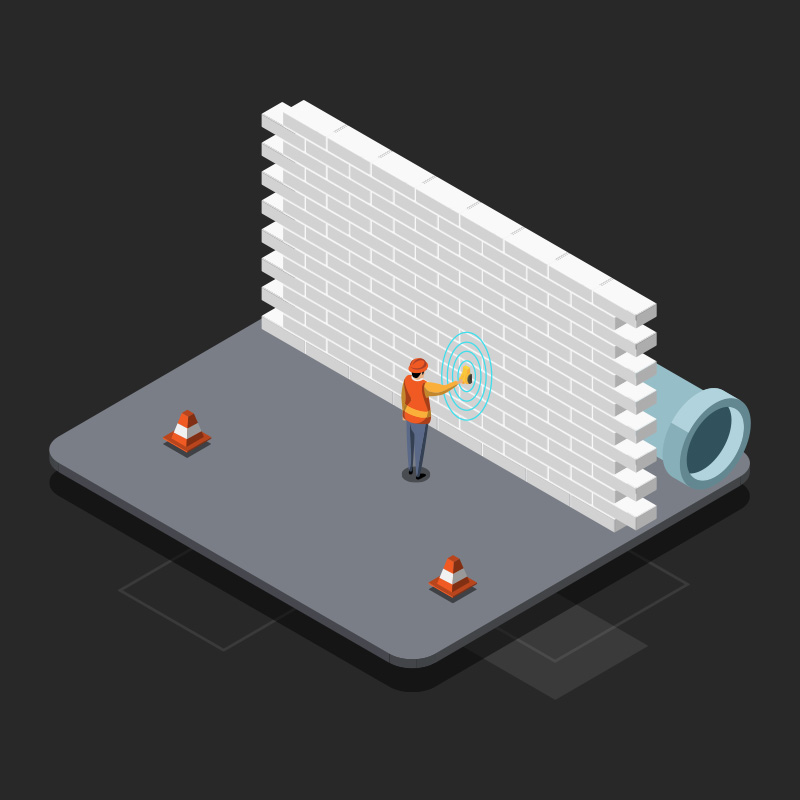RainierGPR Service Areas: Comprehensive Protection for Concrete Scanning
RainierGPR Service Areas: Comprehensive Protection for Concrete Scanning
Blog Article
Enhancing Task Preparation and Execution Through Advanced Concrete Scanning Techniques
In the realm of job planning and execution, insight and accuracy are important components that can make the difference in between success and obstacles. Advanced concrete scanning techniques have become an advanced device readied to elevate the standards of task administration within the building and construction industry. By using cutting-edge technology, these techniques use a glance right into the structural honesty of a structure even before the first block is laid. The implications of such advancements are profound, guaranteeing a paradigm change in how projects are come close to and provided.
Benefits of Advanced Concrete Scanning Strategies

Improved Precision in Project Analyses
Enhancing task analyses with sophisticated concrete scanning strategies substantially boosts the accuracy and dependability of building and construction assessments. By utilizing cutting-edge scanning innovations such as ground-penetrating radar (GPR) and 3D imaging, job teams can currently get comprehensive understandings into the problem of concrete structures, determining possible flaws or weak points that may not show up to the nude eye. This enhanced level of precision in job evaluations allows construction professionals to make even more educated choices pertaining to repair work and maintenance methods, resulting in enhanced total job results.
Additionally, the boosted precision in job assessments accomplished through sophisticated concrete scanning methods assists in lessening the risk of unanticipated issues during the construction stage. By proactively identifying concealed anomalies within concrete frameworks, such as rebar deterioration or voids, task groups can address these issues at an early stage, preventing costly hold-ups and revamp later in the job lifecycle. Eventually, the improved accuracy in task analyses promoted by advanced concrete scanning techniques adds to better performance, cost-effectiveness, and high quality in building projects.
Very Early Recognition of Structural Obstacles
Very early detection of structural difficulties plays an essential role in guaranteeing the integrity and safety of concrete structures throughout the building process. Determining prospective issues at an onset enables timely treatment, preventing pricey rework, schedule hold-ups, and safety and security risks. Advanced concrete scanning methods, such as ground-penetrating radar (GPR) and 3D imaging, enable task teams to discover surprise problems, voids, support layout disparities, and various other anomalies that can compromise the structure's stability.
By applying these techniques throughout the preparation and execution phases, building and construction professionals can proactively resolve architectural difficulties prior to they escalate right into major troubles. For circumstances, discovering insufficient concrete cover over support bars at an early stage can stop deterioration and architectural weakening in the future - RainierGPR Service Areas. Additionally, identifying variations in concrete thickness or density can assist enhance material usage and guarantee consistent stamina properties across the framework

Ultimately, very early recognition of structural obstacles via sophisticated concrete scanning not only boosts the general high quality and longevity of the building and construction however likewise adds to a more secure constructed environment for owners their website and users.
Enhanced Security Measures in Building
The application of durable safety and security methods is crucial in the building and construction sector to reduce dangers and protect the well-being of stakeholders and workers. To improve security procedures, building companies are progressively embracing technological improvements such as wearable gadgets that keep an eye on employees' vital indications and discover possible wellness issues in real-time. By focusing on security through the click to find out more incorporation of sophisticated technologies and detailed training programs, construction tasks can dramatically lower crashes and produce a secure working atmosphere for all involved.
Streamlining Task Administration Processes
To enhance functional performance and guarantee job success in the building market, a focus on streamlining task management processes is necessary. By applying effective job monitoring processes, construction projects can minimize hold-ups, lower expenses, and boost total performance. One key aspect of streamlining job monitoring is using innovative modern technologies such as Building Information Modeling (BIM) software, which enables real-time cooperation, clash discovery, and exact project organizing. Additionally, the adoption of cloud-based project monitoring systems permits smooth interaction among group participants, instantaneous accessibility to project information, and the capability to track progress in real-time.

Conclusion
In verdict, the usage of sophisticated concrete scanning techniques supplies countless benefits for task preparation and execution. These techniques give enhanced accuracy in project assessments, very early recognition of structural difficulties, boosted safety and security procedures in building, and streamlined project monitoring procedures. Integrating these approaches into task workflows can eventually bring about much more effective and effective outcomes in construction projects.
Ultimately, the improved precision in job analyses facilitated by innovative concrete scanning strategies adds to greater effectiveness, cost-effectiveness, and quality in building projects. RainierGPR Service Areas.
To optimize operational efficiency and guarantee task success in the building and construction industry, an emphasis on simplifying project management procedures is crucial. helpful resources By carrying out reliable job management procedures, construction jobs can decrease delays, minimize costs, and enhance overall efficiency. By streamlining task monitoring processes via innovation assimilation, clear interaction, and data-driven approaches, building tasks can attain higher performance, cost-effectiveness, and successful results.
These techniques offer improved precision in task analyses, very early recognition of architectural challenges, enhanced safety and security measures in building and construction, and structured project management processes.
Report this page